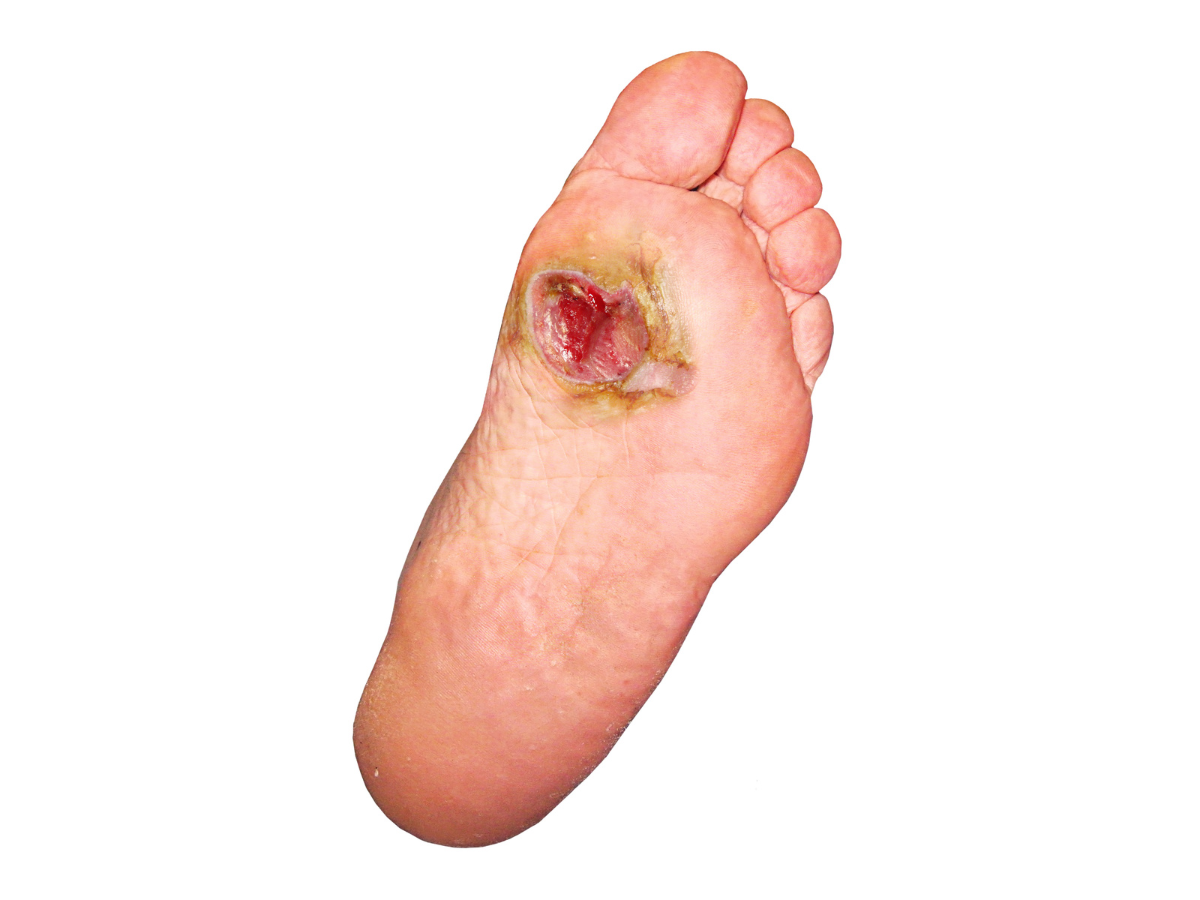Diabetic Foot Ulcers: Complications

Most people know that diabetes can lead to problems with the feet, but many don’t realize just how serious those problems can be. Diabetic foot ulcers are deleterious complications of the disease. They can often lead to serious health issues if not treated properly.
This blog post will look closely at diabetic foot ulcers and discuss ways to prevent them from developing. We’ll also highlight some treatment options available for those who develop a foot ulcer. So, if you’re interested in learning more about diabetic foot ulcers, be sure to read on!
Skin Infections
Diabetic foot ulcers can lead to skin infections. The most crucial factor in preventing these infections is to keep the wound clean and dry. However, if an infection does occur, it is crucial to seek medical treatment as soon as possible. The most common symptom of a skin infection is redness and swelling around the wound.
Other symptoms include pain, drainage from the wound, and fever. If untreated, skin infections can quickly spread to other body parts and become life-threatening. Therefore, it is essential to be aware of a skin infection’s signs and symptoms and seek medical help as soon as possible if an infection is suspected.
Abscess and Sepsis
Diabetic foot ulcers are a common and severe complication of diabetes. They occur when there is damage to the skin and underlying tissue, usually due to infection. If not appropriately treated, diabetic foot ulcers can lead to the formation of abscesses and sepsis. Abscesses are pockets of pus that form when infections go untreated. They can be extremely painful and may require surgical drainage. Sepsis is a life-threatening condition when an infection spreads throughout the body.
Diabetic foot ulcers are a leading cause of sepsis in people with diabetes. If you have diabetes, it is essential to prevent foot ulcers from developing. This includes keeping your feet clean and dry, wearing comfortable shoes, and checking your feet regularly for signs of damage or infection. If you develop a foot ulcer, it is crucial to seek medical treatment immediately to avoid complications.
Foot deformities
Foot deformities, such as bunions and hammertoes, can develop due to diabetic foot ulcers. Additionally, the ulcers can become infected, leading to gangrene. Gangrene is a severe condition in which the tissue dies due to a lack of blood flow. If left untreated, gangrene can spread to the rest of the body and eventually lead to death.
Therefore, it is essential for people with diabetes to have regular checkups with their doctor and to immediately seek treatment if they develop any foot ulcers. With proper treatment, diabetic foot ulcers can heal without any lasting damage.
Amputations
Amputations are a common complication of diabetes. Each year, more than 73,000 adults in the United States undergo an amputation due to a diabetic foot ulcer. The risk of amputation is incredibly high for people with diabetes who also have Peripheral Artery Disease (PAD). PAD is a condition that narrows the arteries and reduces blood flow to the legs and feet. When left untreated, PAD can cause severe tissue damage and lead to the development of ulcers. Once an ulcer forms, it can quickly become infected, leading to gangrene and potentially requiring amputation.
To prevent amputations due to diabetic foot ulcers, it is crucial to carefully monitor your feet for any signs of injury or infection. If you develop an ulcer, it is vital to seek medical treatment immediately to reduce the risk of complications.
Thank you for reading!
References
- Complications of diabetic foot ulcers – Google Search. (2021). Google.com. https://www.google.com/search?q=complications+of+diabetic+fot+ucerss&oq=complications+of+diabetic+fot+ucerss&aqs=chrome..69i57j35i39j0i67l4j0i67i433j0i67l3.7145j0j7&sourceid=chrome&ie=UTF-8